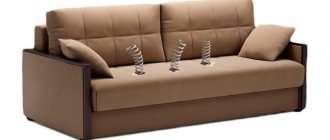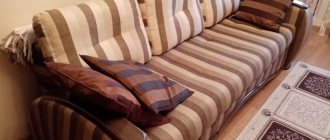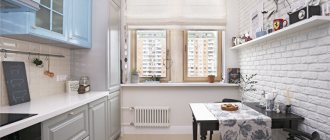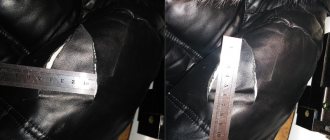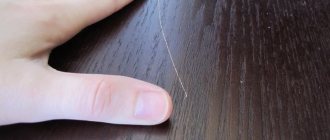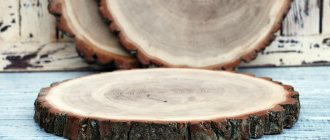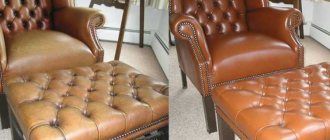A sofa makes any room more comfortable. It is used not only to decorate living rooms, but is also placed in the kitchen in the dining area. Often such a piece of furniture performs the additional functions of a storage box and a sleeping place.
Sofas are not a cheap pleasure. In addition, it is not easy to choose furniture that ideally matches the style and color of the interior. Therefore, some owners prefer to make kitchen sofas with their own hands. What materials to choose for this and how to work with them - read on.
Deciding on design and construction
The most popular, practical option is the kitchen corner sofa. This design can be used by disassembling into separate sectors or placed in one piece, along the perimeter of the wall.
In addition, the models are appropriate in the kitchen interior and practical in everyday life.
So, by covering the wooden panels of the sofa with varnish, you can protect it from the influence of humidity, dampness, and excessive dry air. A corner installation, consisting of two benches with a rounded middle, will take up a small space in the kitchen, which is very convenient.
The aesthetically attractive glossy finish makes it easier to remove greasy stains from the surface.
There are two types of corner sofa: stationary and sliding. The first one is easier to install, so it will perfectly “teach the hand” of a novice master. The sliding design is troublesome to implement, but outwardly it is quite presentable. By following the diagrams and recommendations, it is possible to make both types with your own hands the first time.
Since most dining tables are wooden, the base and handrails of the corner should be made of a similar material.
When designing the kitchen sofa of your dreams, you need to decide on the upholstery. It is this detail that will create an original, interesting piece of furniture. The choice of cushioning material can be microfiber or artificial leather. To make the sofa seats as soft as possible, it is important to choose the filling wisely. There are materials of normal, increased rigidity, soft, hard, elastic. All types will provide additional comfort and softness.
You should choose the filler based on your preferences.
Design
All kitchen sofas are divided by type of design. Before choosing one or another model, you need to: decide on its location, design, dimensions, and materials of manufacture.
Based on their design features, the following types of kitchen sofas are distinguished:
Angular.
They are in demand due to the large number of seats. The model is quite practical and functional. With it, every free meter in the room is rationally used. Installing a corner sofa in the kitchen will create a pleasant and comfortable atmosphere for family gatherings.- Direct. They are quite common, as they do not require a large space for installation .
Different materials are suitable for their manufacture. The shape and design of the direct product can be any. As for the difficulties in making a straight sofa yourself, there are almost none, and in case of failure, such a product can be easily repaired. - Mini sofas. These can be corner or straight models with seating for three people. They are suitable for small spaces due to their compact size. Using this model, you can harmoniously divide the room into zones, fencing off the area for preparing and eating food.
- Benches and sofas. Their distinctive feature is the absence of armrests, which visually simplifies the design. Benches and sofas are made from different materials, including forged metal. This is a good option for installing the product next to the dining area. They do not look as bulky as some sofa models, and are distinguished by ergonomics and a unique design. If desired, you can make a bench sofa with drawers for storing kitchen utensils.
- Combined sofas. Such models are a continuation of other furniture items, for example, a wardrobe. These designs are drawers with seats that are installed near walls or windows.
- Collapsible (with extra bed). This is an ideal option for a small apartment . These designs are more functional and practical. If necessary, they are used as an additional bed. But making a sliding sofa is not so easy. Here you need to have certain skills, patience and free time.
- Stationary. This option is lighter and easier to assemble yourself. Even a beginner in carpentry can handle its production.
Semicircular corners.
They are extremely rare, but they amaze with their originality and exclusivity. This is an ideal option for installation in a studio apartment. Models are equipped with additional elements: shelves, stands, mini-bars, drawers. The presence of a folding mechanism increases their functionality .- Modular. They are true masterpieces of art. They consist of separate modules, allowing you to constantly experiment with shapes, designs and the overall image of the room. The products are suitable for kitchens combined with living rooms. They harmoniously divide the room into different zones, while remaining aesthetic and ergonomic.
Important: the selected sofa model must correspond to the dimensions of the room and be as comfortable as possible for you personally.
Necessary materials
The choice of manufacturing materials is an important step, since the durability of the structure and reliability depend on their quality. When buying lumber, you need to take a slightly larger quantity. This causes the presence of defective elements.
For the kitchen structure you will need:
- Bars 15*15 mm – 1.2 m;
- Bars with a cross section of 40*40 mm – 0.135 m;
- Bars 25*25 mm – 3.6 m;
- Bars 30*30 mm – 1.2 m;
- Board with a section of 20*350 – 1 m;
- Rail 20*60 mm – 2.1 m;
- Plywood 1.2*45*255 cm;
- Foam rubber;
- Plugs for fastening;
- Piano hinges;
- Angles;
- Euro bolts;
- Wood glue.
- Chipboard.
Materials for making a corner sofa.
Various types of fastenings.
Before starting the main work, it is important to decide on the size of the sofa. Craftsmen do not recommend performing it according to standard parameters, since the slightest deviation from the norm can ruin the design.
Dimensional plan of the kitchen sofa:
- Main sofa: length 1.2 m, height 0.85 m, back height 0.3 m;
- Side sofa – 0.45*0.45 m;
- The width of the side panels is 0.45 m;
- Seat height – 0.4 m.
These figures are conditional, but experts recommend not deviating from the parameters, otherwise the risk of production defects will increase.
Fillers
The most popular are soft corners, but the market also provides the opportunity to purchase a model with a hard seat. The choice of filler is also an important point, since over time, dents may appear in some places on the seat.
- Foam rubber. It is the most budget-friendly filler. Models with it will last 3-5 years.
- Batting . The service life of such material is also on average 5 years. This is a natural material consisting of wool.
- Polyurethane foam. This is the best option because it has greater density. It quickly acquires its original shape and does not deform under the influence of moisture.
Required Tools
In the event that the kitchen corner will be made with your own hands, you need to take a set of tools from the carpentry shop:
- Wood file;
- Drill;
- Electric jigsaw;
- Screwdriver;
- Electronic planer;
- Building level;
- Ribbon;
- Sandpaper;
- Scissors;
- Stapler with staples.
- Knife for foam rubber.
This is the main list. Be sure to prepare safety glasses, gloves, a simple pencil for marking, and a ruler.
More about corners
Products are offered in a wide range and with various sliding mechanism mechanisms. Some of them are equipped with additional sections.
The mobility of the structures ensures their unhindered everyday use. A kitchen corner is a place for relaxation and gathering of all family members, but it can serve not only an aesthetic role, but also be more functional - create additional comfort and be a kind of storage for things.
Separate seats in the kitchen corner with side and vertical drawers
Traditionally, high quality materials and fittings are used to manufacture such products. The upholstery can be used in a variety of ways, and everyone can choose products at their discretion - tapestry, velor, ecological leather or natural materials.
The color palette often surprises consumers with a riot of colorful solutions and ornaments, so it will not be difficult for you to choose the right option for yourself, designed to make your kitchen truly exceptional.
Convenient and practical drawers of different sizes
To provide even more comfort for you and your family, the seats and backrests are even softer and the design of each product is truly exquisite. Products can be decorated with chrome elements and original cabinets.
All corners for the beauty of the interior are made in a modern and fashionable look, so they will easily fit into the overall theme and create an atmosphere of comfort in your room.
Soft velor corner in the kitchen dining area
Assembling a sofa for the kitchen
Construction of the structure body is 50% of the implemented idea. To form a sofa you need to make seats. You need to make “skeletons” from a 25*25 mm bar. They are sewn up with plywood sheets 25 mm thick. Unevenness and joints are rubbed with sandpaper. A prerequisite is the treatment of wood elements with an antiseptic solution, a layer of stain, and varnish.
Foam rubber is attached to the front side of the lid with a stapler or lowered with glue.
Piano hinges should be strengthened along each one. Afterwards they will connect the main module with the seat. Before upholstery, all open areas of the modules are covered with plywood, and the seats are attached to the frame. The wood is covered with varnish color.
Advantages and disadvantages
Corners for the kitchen gained popularity during the existence of the Soviet Union. Back then they all looked the same and were usually equipped with special storage boxes. Currently, the market offers all kinds of design options.
All corners have a number of advantages:
- they make eating more comfortable by providing you with a comfortable and soft place to sit;
- they save space, as they are easy to install in the corner of the room;
- options equipped with storage systems also optimize the use of kitchen space and allow you to fit more things;
- folding models will help you create an additional sleeping space in your house or apartment;
- they are ideal for zoning the kitchen space;
- variety of accessories, colors, textures and shapes.
However, one cannot help but notice some of the shortcomings of such furniture elements.
- They take up a lot of space and do not have sufficient mobility. For a small kitchen they may be too bulky and inconvenient.
- Sometimes it is difficult to find a model made in a certain style or color scheme. In such cases, it is better to make custom-made furniture, which will significantly increase its cost.
Corners are not always convenient for large companies. Those sitting in the center or corner will have to constantly ask everyone to stand up to allow them to leave the table.
Kitchen sofa upholstery
The DIY kitchen sofa is almost ready. The next stage is upholstery. The material chosen is synthetic winterizer or foam rubber. Each element of the sofa is measured.
The upholstery material is cut out according to the parameters, attached directly to the furniture parts with glue.
We do the back upholstery in the same way.
Next, you should cover the lining with fabric. In this regard, the most used fabrics are jacquard, velor, microfiber, flock. To perform processing, cut out parts of the selected material according to the dimensions of the sofa elements with allowances.
The material should be attached to the backs of the modules and the joints with the seats.
The final stage of making a corner sofa with your own hands is assembling all the parts into one whole.
What to consider when choosing materials
The choice of a kitchen corner should be approached responsibly, because this piece of furniture is made to last for many years, and how comfortable and enjoyable breakfast, lunch, and evening tea drinking will depend on its appearance and convenience. In addition, making furniture yourself means feeling like a designer and acquiring a source of pride.
As for upholstery, it is better to prefer synthetic materials, leatherette, because they are more practical: they retain their appearance much longer and are easy to clean. The material must have dirt-repellent properties, be moisture-resistant, and withstand regular cleaning. The upholstery must be durable and able to withstand the weight of people sitting on it.
- Microfiber. This fabric is durable, stain-resistant, and has a non-fading color. If there is a Teflon coating, then drops of water are not absorbed, but roll off along the surface.
- Velours. It is not recommended to choose velor as upholstery for kitchen upholstered furniture due to its impracticality. Although the cost of the material is low, food particles and liquids easily eat into the structure, and frequent washing and cleaning renders it unusable.
- Flock. This material is an excellent choice for pet owners. Not only does no hair remain on it, but claw marks are almost invisible. Flock is a durable, practical option for upholstery and does not require serious maintenance.
- Faux leather. Resistant to temperature changes, suitable for frequent washing with detergents, does not fade.
- Genuine Leather. The high cost of the material is compensated by its durability, but leather care is not the most practical. It should not be rubbed, because the area where it was cleaned may change color or become deformed.
Before you start work, you need to prepare all the necessary tools and materials that will be required to make the sofa. For the frame, you can choose laminated chipboard; it has a number of advantages: affordable price, wide selection of shades, and resistance to high humidity.
Foam rubber or polyurethane foam is used to fill the backs and seats. To avoid deformation, the material must be sufficiently rigid.
The width of the seats should not exceed 40-45 cm, and the legs of the sofa should be under the vertical profile of the seat, otherwise there will be inconvenience when sitting at the dining table.
Sofas in the kitchen interior – 50 photo ideas:
How to make a corner sofa for the kitchen with your own hands - basic steps and important nuances
To create a homemade product, you must first decide on the appropriate technology. The easiest way to process blanks is made of natural wood. You will need simple carpentry tools. It's not too difficult to learn basic skills. It is much more difficult to produce high-quality metal products using welding. When choosing such a material, you can order complex parts from a locksmith workshop. The structure is assembled using screw connections.
A durable power frame can be made from concrete blocks, bricks, wooden beams
Similar designs are suitable for loft style. With appropriate upholstery, they will be no different from ordinary upholstered furniture.
To reproduce at home, you can use drawings of a simple design
The walls and other parts of the load-bearing frame are made of laminated chipboard with a thickness of at least 16 mm. Instead of confirmations, which are used during factory assembly, you can use self-tapping screws of suitable size. When choosing dowels made of polypropylene, you can eliminate adhesive connections. For seat upholstery, choose fabric or eco-leather. Secure the materials with a construction stapler. Foam rubber filler is selected with a density of 60-110 kg/m². A layer of at least 20-25 mm is created from it.
To quickly cut out parts from chipboard, use a jigsaw
For your information! Some structural elements have beveled edges. The corner cut is made using a tilt shoe. The ends are covered with plastic or paper tape.
DIY soft kitchen sofa with sleeping area
As one of the options for making a kitchen sofa with a forward folding mechanism, Meralat. For production you will need ordinary furniture materials and tools. We replace all missing elements with analogues if necessary.
We use 15 mm plywood. Optional 20 mm. If we consider a cheap, inexpensive option, then we take chipboard, preferably at least 18 mm. But in the end it can affect the life and quality of the product.
We assemble the frame from plywood and wooden beams using wood screws.
We cover it with foam rubber and padding polyester. We insert the folding mechanism of the required width of the berth.
This is what the sofa will look like when unfolded.
The mattress is sold together with the mechanism, but it will be cheaper to do it yourself. We select the density of foam rubber according to the desired softness and service life.
Covered with fabric. In this case, velor was used. For simplicity, you can make joints in some places, and not with a solid cover, as in the photo.
We cover the seat cushions with padding polyester. Blue and white foam rubber of different densities are used for seating.
Let's try on what it will look like in height and width. We choose the best option for ourselves. The standard seat height is 45 cm.
We cover the mattress with fabric. This is what the finished product looks like when unfolded. The mechanism used is 100 cm wide. The overall width of the sofa is about 125 cm.
How much does a corner sofa cost for the kitchen - an overview of market offers with prices
| Model | Side length, height, cm | Price (as of June 2021), rub. | Peculiarities |
| Lord | 170×120×90 | 19400 | The backrest is covered in technical fabric. The pillows move along the guide rails. The sides have pockets for small items. |
| Verona | 193×106×82 | 22500 | Dolphin type transformation mechanism. Built-in drawer. Filler: polyurethane foam. Choice of material. Dimensions may change. |
| Barista | 175×120×84 | 18600 | There are no drawers for storing things. The length of the sides can be selected from 120 to 245 cm with a certain pitch. The frame is made of solid pine and plywood. |
| Jutta | 120×150×88 | 10900 | The photo shows an economical corner sofa for a small kitchen with built-in drawers. |
| Palermo Soft | 180×160×82 | 49400 | "French" folding bed. Solid wood frame. Improved filler. |
| Freehatan | 230×151×66 | 20100 | Corner sofa for the Ikea kitchen. Cover with upper position lock. Sleeping area. |
